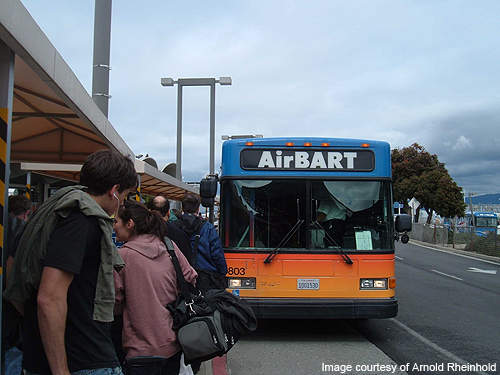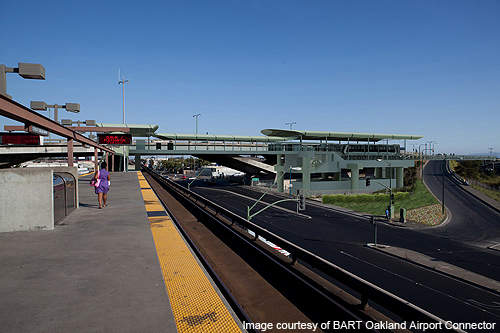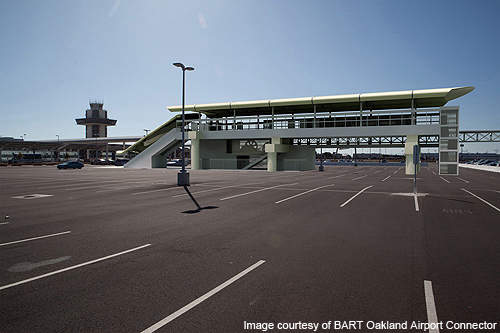The Oakland Airport Connector (OAC) project is a 3.2 mile skyline between San Francisco’s Bay Area Rapid Transit’s (BART’s) Coliseum Airport Station and the new terminus at Oakland International Airport. The project will use right-of-way elevated Automated Guideway Transit (AGT) system to avoid traffic on Hegenberger Avenue.
Construction on the project is scheduled to commence by the end of 2010 and it will become operational by 2014. The estimated cost of the project is $484m.
Once complete, the project will replace the AirBART bus system that is operating between Coliseum Station and the international airport.
Oakland International Airport is currently connected through AirBART buses, Alameda-Contra Costa Transit District buses, taxis and airport shuttles. These cause severe traffic congestions during the Coliseum events.
The annual ridership of AirBART has grown from 126,500 passengers to 1.3m passengers in 2008 with trip times varying from 12 to 30 minutes.
The OAC project is expected to be a solution to the congestion. It will reduce trip times and provide seamless connection to the BART system. The Automated People Mover (APM) system will have an on-time performance of more than 99% and is expected to carry more than 10,000 passengers a day by 2020.
The project will also boost the economic conditions of Oakland city as it will create 5,000 direct and indirect jobs.
Oakland Connector background
The OAC project was originally conceived in 1970 to address the growing air traffic concerns and provide better transit facilities in the Bay area. The feasibility study, preliminary design, technical assessment, and environmental impact study were completed between the 1970s and 1990s.
The project was approved in 2002 and a request for quotation was issued in 2009 for the design-build-operate-maintain (DBOM) contract. The contract was awarded to Flatiron / Parsons joint venture in December 2009 and was again bifurcated into separate contracts after the withdrawal of stimulus fund by the Federal Transit Administration (FTA).
Finance
The estimated cost of the project in 2009 was $552m.
The project will be financed through various sources. The local agencies have committed to finance up to $274.5m and the State Transport Councils such as the Metropolitan Transportation Commission (MTC), California Department of Transportation (Caltrans) and the California Transportation Commission (CTC) have committed $78.9m. The Federal Transit Administration has contributed $25m towards the project. The remaining amount has been raised through debt.
The $70m stimulus fund that was set aside for the project was blocked in February 2010 due to non-compliance with Title VI of the Civil Rights Act. This delayed the contracts process which was originally scheduled for December 2009.
Contracts
The design and build contract, worth $416m, has been awarded to a joint venture of Flatiron / Parsons while the operations and maintenance (O&M) contract of 20 years is awarded to Dopplemayr Cable Car. The BART board reaffirmed these contractors after a financial re-plan in September 2010.
The design-build contracts include provision of labour, equipment, materials, designs and services for project management and control; preliminary and final design and engineering; construction of all facilities; installation of necessary equipments and test runs. It also includes acceptance, safety and security certification of the system.
The O&M contract deals with operation and maintenance of the completed OAC project.
OAC project
The OAC project consists of construction of a guide way, passenger stations, a maintenance and central control facility, and installation of the AGT system and various fixed facilities.
It also includes construction of a power substation, wayside equipment and ancillary rooms.
The AGT system will have end terminals at the Coliseum BART Station and at the International Airport Terminal. The APM system will operate at headway of 4.5 minutes and will transport passengers between the two stops in 8 minutes.
The route will start at Coliseum Station and proceed along the south of Doolittle Drive on Oakland International Airport property.
The corridor will run between the airport drive in the west and pass through the Lew F. Galbraith Municipal Golf Course in the east. It will further proceed southwest to the terminus at the new airport terminal.
The AGT system will operate on an exclusive right-of-way elevated guide way with provision for future stops. An intermediate stop at an intersection of Doolittle Drive and Hegenberger Road is also in pipeline.










